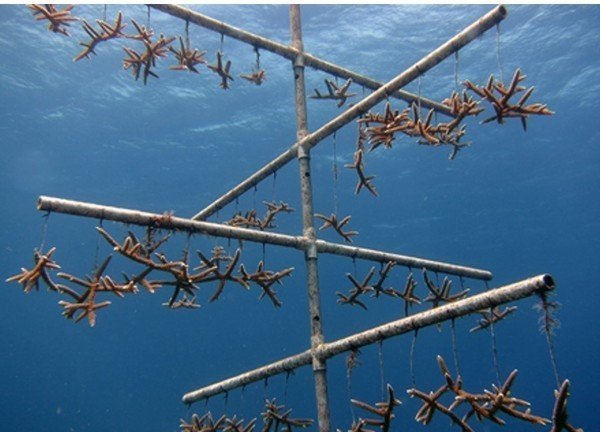EPA Research in the Pacific Islands
EPA researchers are working hard to protect communities across the nation. Learn about some of the work EPA researchers are doing in the U.S. Pacific Territories of American Samoa, the Commonwealth of the Northern Mariana Islands, and Guam; U.S. Minor Outlying Islands in the Pacific; and the Freely Associated States of the Federated States of Micronesia, the Republic of the Marshall Islands, and the Republic of Palau.
- Helping Community Drinking Water Systems Find Cost-Effective Solutions to Treatment Challenges
- Guide to Coral Reef Restoration Planning and Design
- Loaning Air Quality Monitoring Technology
For more EPA work, see EPA in the Pacific Islands.
Helping Community Drinking Water Systems Find Cost-Effective Solutions to Treatment Challenges
Emerging contaminants, such as per- and polyfluoroalkyl substances (PFAS), are challenging to drinking water systems across the country. Effective treatment for emerging contaminants can be unknown, difficult, and extremely costly. Working with the Commonwealth of the Northern Mariana Islands, EPA researchers are providing technical assistance to a large community water system with PFAS concerns to help them identify optimal, cost-effective treatment methods and optimize the long-term operation of their chosen technology. These efforts will also be used to develop best practices and performance and cost estimate tools so water utilities across the country can make informed treatment and operational choices.
Guide to Coral Reef Restoration Planning and Design

Coral reefs are among the most vital and diverse habitats in the world. However, climate change and human actions are severely threatening these magnificent ecosystems. EPA recently joined NOAA and the Nature Conservancy to release a guide for reef managers as they plan, design, and implement restoration projects. The guide has been used to assist reef managers in developing draft Restoration Action Plans for the U.S. jurisdictions of American Samoa, the Commonwealth of the Northern Mariana Islands, Guam, and Hawaii. NOAA also uses the Guide to support restoration planning in the U.S. Virgin Islands and Puerto Rico. Read EPA Joins the Nature Conservancy, NOAA, in Releasing Guide to Coral Reef Restoration Planning and Design.
Loaning Air Quality Monitoring Technology
The Commonwealth of the Northern Mariana Islands' environmental agency organization reached out to EPA's Office of Research and Development (ORD) asking for technical assistance for screening-level monitoring technologies to so they could better understand the impact of episodic smoke and other air pollution occurrences hitting the islands. The request was a perfect fit for ORD’s Wildfire Smoke Air Monitoring Response Technology (WSMART) loan program. The ORD WSMART team loaned three small PM2.5 sensors for longer-term smoke impact measurements and their custom-developed Vehicle Add-on Mobile Monitoring System (VAMMS). They also provided remote training and technical support to ensure the environmental agency could successfully set-up and operate the monitoring technologies. Read the EPA Research Partner Support Story: Loaning Air Quality Monitoring Technology.
